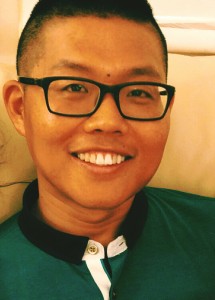NSU Newsroom
SharkBytes
Horizons
This version of NSU News has been archived as of February 28, 2019. To search through archived articles, visit nova.edu/search. To access the new version of NSU News, visit news.nova.edu.
This version of SharkBytes has been archived as of February 28, 2019. To search through archived articles, visit nova.edu/search. To access the new version of SharkBytes, visit sharkbytes.nova.edu.
Math Colloquium Series to Discuss Spectroscopic Sensing, Sept. 28
Join NSU’s Halmos College of Natural Sciences and Oceanography for the next Mathematics Colloquium Series event.
“Modeling and Methods of Signal Separations with Applications in Spectroscopic Sensing”
- Speaker: Yuanchang Sun, Ph.D., assistant professor, Florida International University (FIU)
- Wednesday, September 28
- Reception/Refreshments offered at 11:30 a.m. | Discussion begins at noon
- Mailman-Hollywood Building | Second Floor Auditorium
- This talk is free and open to the public
Spectroscopic sensing is a powerful and a widely used family of techniques for detecting and identifying chemical and biological substances. For example, nuclear magnetic resonance relies on the magnetic properties of the atomistic nucleus to determine the molecular structures. Raman spectroscopy uses laser light scattering and the resulting energy shift of photons to sense the vibrational modes of a sample. In remote sensing, hyperspectral imaging makes use of hundreds of contiguous spectral bands to identify nearly invisible objects at subpixel level. Differential optical absorption spectroscopy utilizes the light absorption property of matter to identify broadband and narrowband spectral structures, as well as to analyze atmospheric trace gas concentrations.
However, it is challenging to identify spectral signals in real-world applications due to many complicating factors. This talk will address the mathematical and computational methods for separating spectral mixtures when minimal or partial knowledge of the source signals is known.
About the Speaker
Guest speaker Yuanchang Sun, Ph.D., teaches mathematics at FIU. He received his Ph.D. in Applied and Computational Mathematics from Michigan State University. His research areas include signal separations and decompositions, data analysis, mathematical modeling, analysis, and computations of light-matter interactions on microscopic scales.
About the Series
Hosted by NSU’s Halmos College of Natural Sciences and Oceanography Department of Mathematics, the Mathematics Colloquium Series aims to increase awareness of the importance of mathematics and applications in daily life. The series also gives mathematics faculty members and students the opportunity to discuss independent research and share their passion for the subject. For more information, contact Jeffrey W. Lyons, Ph.D., associate professor, at (954) 262-7931.
MCS Flyer – Sept 28, 2016 – Yuanchang Sun – FIU

